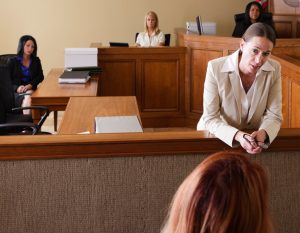 The facts are facts and you should never alter them, but you need to tailor your presentation to your audience so you can win for your side. Always be conscious of who is on the receiving end of your communication. While this may sound obvious, it is worth revisiting from time to time. How you present your story can win or lose your case.
The facts are facts and you should never alter them, but you need to tailor your presentation to your audience so you can win for your side. Always be conscious of who is on the receiving end of your communication. While this may sound obvious, it is worth revisiting from time to time. How you present your story can win or lose your case.
Years ago, I learned this the hard way when I worked for the New York City Department of Investigation in the Buildings Special Investigation Unit (BSUI). Our unit was charged with investigating and, where warranted, administratively prosecuting those who did business concerning the Department of Buildings (DOB). This included licensed engineers and architects as well as skilled trade professionals. I had one particular case that was what many prosecutors would call a “slam dunk.” We received a complaint about a job that had caused major damage in a home in Brooklyn. We had tracked down the responsible skilled trade professional in Florida who was signing off on inspections that were being done here in New York on his New York license. We had flight records, phone records, and witness testimonies. In our recorded interview, the licensee admitted not only to not being present for the inspections, but also to not knowing anything about some of the jobs which he supposedly had inspected although he had signed off on each. It was a great, easy case for a young, eager investigative attorney.
The procedure to revoke this particular individual’s license required that we present our case to a board (the “Board”) that was made up in part by similarly skilled professionals as well as DOB representatives. The Board would vote on whether to administratively prosecute and revoke the individual’s New York skilled trade license. I was so confident in the case that I let my promising law school intern present it to the Board. The intern laid out beautifully how the licensee was never present for inspections. She presented the evidence in a clear and convincing manner. She truly did a superb job. To my utter shock, the Board voted to drop the investigation.
I had failed to consider our audience. The majority of the Board were similarly skilled licensed professionals who had a very different perspective from ours at BSIU. To the Board, this individual had worked hard for years to build a small company with workers he trusted. He invested and relied on his workers to do his jobs and signed off on them based simply on faith that they did it correctly. This individual was in some ways their own reflection. The fact that the licensee was not present for the inspection simply did not resonate with the Board.
However, these same board members were understandably very proud of their highly skilled profession. Had I considered who the Board members were, their background and what they believed their role was, I would have simply emphasized the shoddy work that had led to the original complaint. These same board members would have likely voted to take the case forward and seek to revoke this individual’s license. In my post mortem — as we refer to it at our firm — I realized that because I neglected to consider the audience, I lost the case.
I thankfully took this lesson to heart. In the midst of litigation, it is easy to overfocus on the facts and forget to consciously address the delivery, but this mistake could be fatal. You need to tailor your presentation to your audience, always.
 Vittoria Fariello is an experienced investigator and litigator who has counseled her clients throughout all stages of litigation. She is a partner at the law firm Balestriere Fariello in New York, where she and her colleagues represent domestic and international clients in litigation, arbitration, appeals, and investigations. You can reach her at vittoria.m.fariello@balestrierefariello.com.
Vittoria Fariello is an experienced investigator and litigator who has counseled her clients throughout all stages of litigation. She is a partner at the law firm Balestriere Fariello in New York, where she and her colleagues represent domestic and international clients in litigation, arbitration, appeals, and investigations. You can reach her at vittoria.m.fariello@balestrierefariello.com.
The post Know Your Audience So You Know Your Story appeared first on Divorce Your Ring.
source https://divorceyourring.com/top-posts/know-your-audience-so-you-know-your-story/
No comments:
Post a Comment